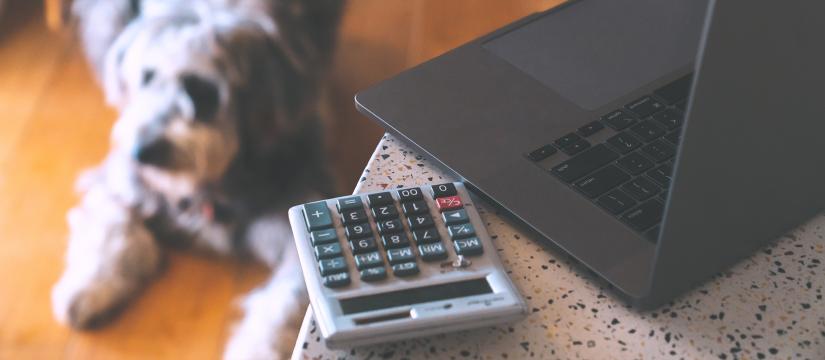
Home office tax help.
If you’re one of the many Australians who worked from home during the past year, by now you probably have your home workspace set up just the way you like it. But as tax time approaches, you might be wondering how the change in working conditions has affected what you can and can’t claim. We’ve put together a rundown to help you get started.
What defines a deduction?
According to the Australian Taxation Office (ATO), when you complete your tax return you can claim deductions for some expenses incurred while working from home (WFH). Most of these are for expenses that relate directly to earning your income.
To claim a work-related expense, you must have spent the money yourself and not have been reimbursed for it. It must directly relate to earning your income, and you must have a record to prove it with a receipt, bank statement or other proof of purchase.
What can (and can’t) I claim?
Some of the items you can claim are:
- Vehicle and travel expenses if you use your own car for work-related purposes. You can only claim for the work-related expenses, not for personal use of your vehicle.
- A portion of your home expenses, such as internet, phone, electricity and gas bills.
- Home office expenses such as stationery, bookkeeping software, your computer, printer, ink, filing systems, bookshelves and office furniture. You may be able to claim the full cost of the item if it’s less than $300 or the decline in value (depreciation) for items over $300.
- Self-education expenses such as online training, textbooks and courses.
- Tools, equipment and other assets used for your business.
- Protective gear such as face masks, gloves, hand sanitiser, anti-bacterial spray, hard hats, safety glasses, sunglasses and cosmetics containing sun protection.
- Clothing, laundry and dry-cleaning expenses if used for business purposes.
- Occupation-specific expenses
- Bags, briefcases and satchels
- Investment income if you’ve received interest payments on your savings, dividends
- from your investment shares or rental payments from an investment property.
- Overtime meals
- Subscriptions used for work, such as Foxtel, Netflix, Stan, Disney+ or industry subscriptions in print and broadcast
- Tools and equipment necessary for you to complete your work
- Union fees and subscriptions to associations.
The ATO warns there are a number of expenses you can't claim, such as:
- Coffee, tea, milk, toilet paper and other general household items your employer may otherwise have provided you with at work
- Items provided by your employer or any expenses that have been reimbursed
- Items related to your children and their education, including setting them up for online learning, teaching them at home or buying equipment such as iPads and desks
- Items you're reimbursed for, paid directly by your employer or the decline in value of items provided by your employer – like a laptop or a phone
- Your own occupancy expenses like rent, mortgage interest, water and rates
How do I work out my deductions?
There are three ways you can claim WFH deductions, using the Shortcut, Fixed Rate or Actual Cost methods. Only you can decide which one works best for you, but here’s a quick overview.
Shortcut: The pandemic drastically changed the way we work, which in turn raised numerous questions around claiming work-related expenses when working from home. To minimise confusion, the ATO responded with the shortcut method, a simplified system for the 2020-2021 financial year (1 July 2020 - 30 June 2021). The new system allows taxpayers to claim 80 cents for every hour they’ve worked from home, rather than trying to calculate costs for specific running expenses.
While this system is far simpler than going through your expenses line by line, it’s important to know that if you claim under this system, you cannot claim for anything else, such as office furniture or higher electricity bills because you’re at home more. There’s a helpful, easy to read summary on how this system works on the ATO website.
Fixed Rate: Another option is the fixed rate method which allows people to make a working-from-home claim under existing arrangements, where you calculate all or part of your running expenses. This method requires you to keep a timesheet of the number of hours you work from home, with the benefit being you may be able to claim a higher amount by crunching the numbers.
Actual: A third option is to claim on actual costs, meaning you would work out your deduction from actual costs incurred as a result of working from home, such as phone, internet, power, supplies, etc. To work out your actual expenses, you must keep detailed records, receipts or diary entries for the full 12-month period.
It’s important to find the method that works best for you and understand the criteria you need to meet in order to claim a deduction. If in any doubt, the ATO website has lots of helpful information and can also point you in the right direction, get in touch or speak to a consultant.
This is general information only, so if you have questions about your income tax or what deductions you are entitled to claim, speak to your accountant or tax professional for advice.
Remember if you are a NRMA customer you can download all your tax documents online here.

